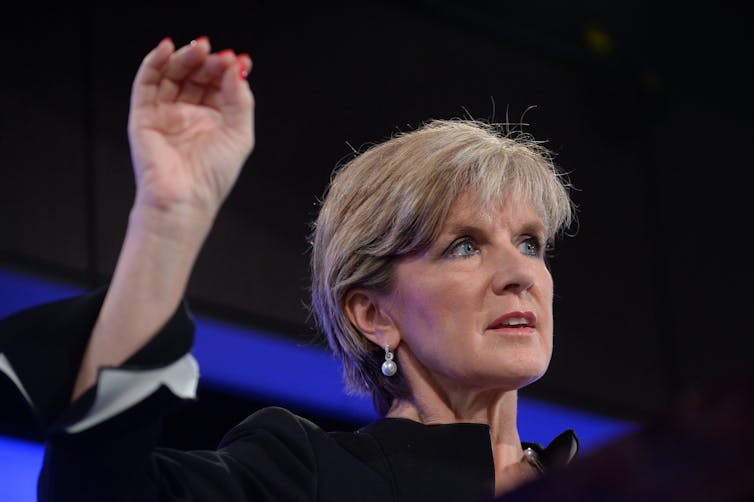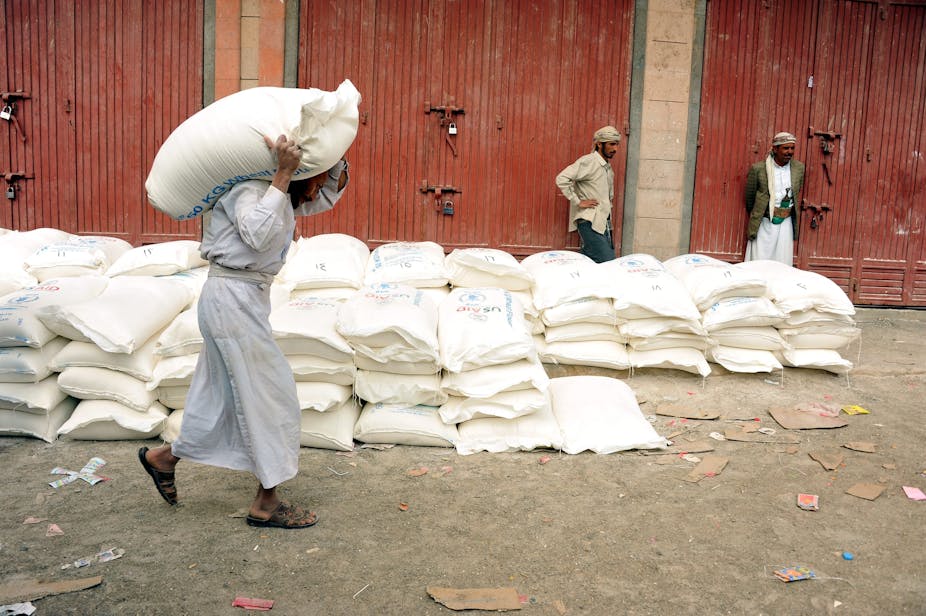Even before assuming office, foreign minister Julie Bishop was clear on the Coalition’s approach to foreign aid: “aid for trade” was touted as the primary strategy of the Coalition’s aid program. Last week, Bishop made clear that aid for trade would be an increasing part of the government’s overall aid strategy:
International evidence reinforces that private sector-led growth is the primary driver of poverty reduction and so we will ensure, by our incremental process of embracing aid for trade initiatives, that we do make a difference to the lives of those who need it most.
Aid for trade has increased globally as an approach for donors to assist developing countries to access global markets through improved trade capacity. However, there is scant evidence that aid for trade has any impact on lifting the poorest people globally out of poverty.
The emergence of aid for trade
The World Trade Organisation (WTO) defines aid for trade as:
… about assisting developing countries to increase exports of goods and services, to integrate into the multilateral trading system, and to benefit from liberalised trade and increased market access.
Aid for trade includes support through trade policy, economic infrastructure, building productive capacity, and trade-related adjustment. Australia supports a variety of aid for trade initiatives, through multilateral, regional and bilateral approaches.
Examples of Australia’s support include the WTO Global Trust Fund, which helps developing countries engage more effectively in multilateral trade negotiations and implement their WTO membership commitments. Aid for trade definitions and Australia’s aid for trade programs are aimed squarely at national-to-regional scale trade relations and engagement.
Aid for trade gained prominence in 2005, when WTO member states agreed a greater need existed for structured trade-related aid assistance. Since then, development agendas and policies of donor countries have changed markedly as the focus on trade as a form of aid has taken hold.
Aid for trade now constitutes around one-third of Official Development Assistance (ODA) globally. Asia is the largest recipient region of aid for trade, receiving US$17 billion in the latest OECD estimates.
Impact on poverty and measuring benefits
Despite the growth in aid for trade interventions globally, critics argue that there remains a lack of data on if, how, and to what extend aid for trade interventions impact on levels of poverty.
While studies are emerging that aim to assess the aid for trade “lessons from the ground”, most fail to provide details of local impacts of aid for trade, instead focusing on macro-level results.
And as is the case with many evaluations, causal linkages between aid for trade interventions and poverty are based on assumptions and are inherently difficult to measure, posing a challenge for donors as well as NGOs that may begin incorporating aid for trade into their programming in order to access funds through the aid program. Guidelines on how to measure or evaluate aid for trade interventions are lacking, posing a barrier to improving the approach globally.
A recent World Bank report also notes that the high cost of impact evaluations acts as a deterrent to undertaking such assessments. Given the Australian government’s calls for tightened accountability and a greater emphasis on rigorous performance measurement, this presents a challenge if aid for trade is to be “the cornerstone of our aid policy”, as Bishop says.

Who stands to benefit and who will miss out?
Aid for trade is aimed at the economically active parts of society, not the poorest “bottom of the pyramid” population who remain outside the formal economic sector – for example, a family living a subsistence lifestyle in a remote island of Vanuatu.
For this reason, NGOs, whose work is often at the community level, are wary of whether or not macro-scale trade interventions will provide benefits to people living in poverty.
Issues of gender also arise in discussions around the benefits of aid for trade. Women in developing countries contribute significantly to the labour force while often remaining outside the formal economic institutions, and therefore do not benefit from trade policy. A 2011 World Bank study investigated this issue, providing suggestions of how aid for trade can target entry points that allow for gender equal opportunities for trade, studies and policies.
Other studies also consider issues of gender inequality and trade. However, identifying ways to address these complex, often culturally embedded biases remains a challenge, with simple fixes such as trade sanctions proving ineffective.
Proponents of aid for trade argue that if done effectively, the approach can raise government revenue, allowing domestic service delivery and social policies for health, education and basic infrastructure to improve. However, there remains a lack of evidence that trade reforms do lead to recipient countries increasing spending on social programs, and that emphasis is being put on ensuring benefits reach the poorest communities.
To overcome the challenges of this new environment, NGOs are increasingly branching into work with the private sector. These new partnerships are a means to test the water to see where and how NGOs can add value and find ways to ensure their own goals of poverty reduction align with the government’s new approach to foreign aid.

